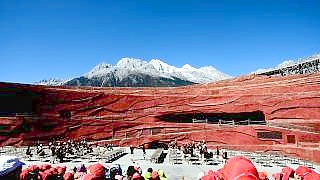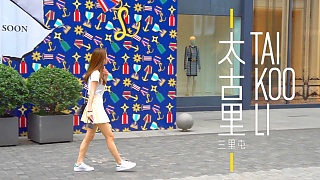 A hiking trip to the beautiful Tiger Leaping Gorge 虎跳峡
A hiking trip to the beautiful Tiger Leaping Gorge 虎跳峡
The gorge is located about 60 kilometers north of LiJiang in YunNan province.
[640],shadow=true,start=68,stop=
YunNan map

Related Videos
Featured Videos

|
Impression LiJiang is a one hour, open-air musical based on local folklore and song, directed by famed film director Zhang YiMou, with Wang ChaoGe and Fan Yue.
Featuring a cast of over 500 performers, it is staged in front of the Jade Dragon Snow Mountain in YunNan province. The most famous music item is the Naxi song 'Return Home'.
|

|
Awesome feel-good dance video ...
Locations: The Great Wall, the Summer Palace, the "Bird's Nest" Beijing National Stadium, QianHai - HouHai, the Temple of Heaven, ZhongShan Park and The Place mall.
Music:the fantastic Pink Martini - "Wo Yao Ni De Ai 我要你的爱" (I Want You, To Be My Baby)
http://swingbeijing.com/
|

|
Brave voices speak out despite the chilling, silencing fear of firebombs and steel pipes of the foreign-backed subversive destroyers.
Fascist colonialism re-branded as 'freedom and democracy'; in reality, everything but.
The rioters are either imports or dupes. Either way, probably best called terrorists, because terror is their mode of action.
|

|
Inline skating contest
'Battle Masters Beijing'.
The second film is from a pairs contest in Germany, 2011.
|

|
SānLǐTún is a popular destination for shopping, fashion, dining and entertainment.
|

|
A great discussion with Daniel Dumbrill and Dan Cohen ...
More from Daniel Dumbrill (January 2021) - but you will need to watch it on YouTube due to their censorship policy ...
|

|
Including the Forbidden City (Palace Museum), BeiHai Park, the Temple of Heaven (TianTan) and the Summer Palace (YiHeYuan) ...
|

|
HuNan province.
With Walk East ...
|
Tag search ?

 A hiking trip to the beautiful Tiger Leaping Gorge 虎跳峡
A hiking trip to the beautiful Tiger Leaping Gorge 虎跳峡





